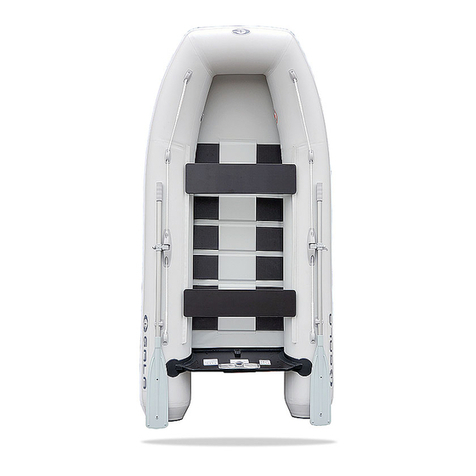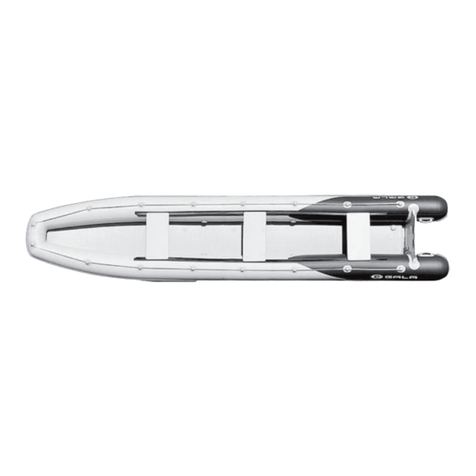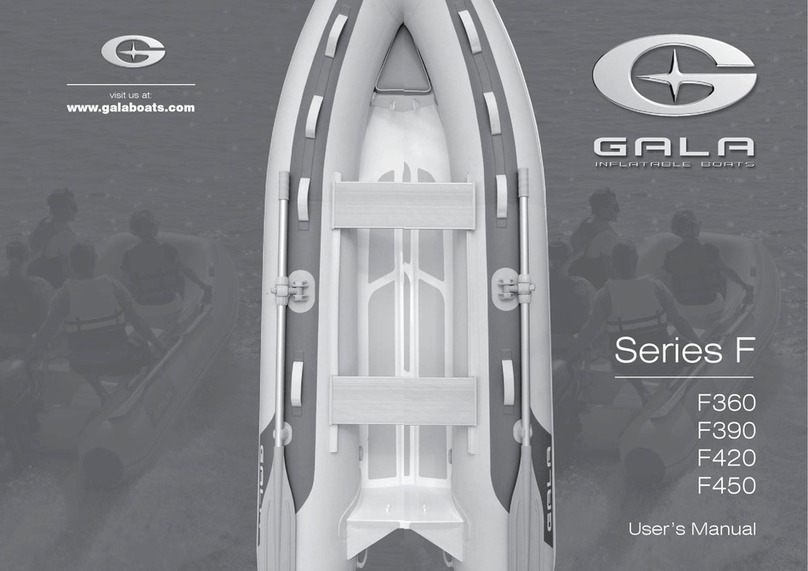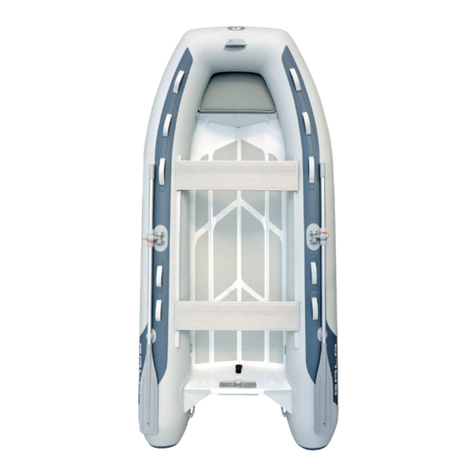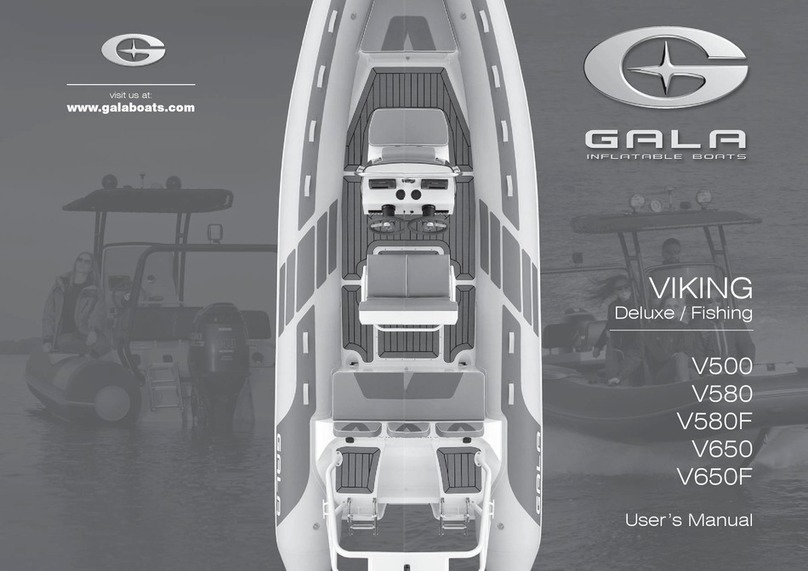
7. FUEL SYSTEM
GALA boats fuel system is optional feature for V330, V360 and it includes:
Permanently installed fuel tank with 40 lit capacity.
STD type fuel sender (sender resistance 240-33 Ohm)
Gas fill with vent
Fill-in hose, vent hose, engine feeding hose traced to the boat transom
Fuel system does not include any fuel filters, gauges, or other equipment not listed above.
All additional equipment has to be installed and properly tested before use by qualified
Dealer or other company, which does the rigging of the boat to make sure that the fuel
system final installation and connections meet the local legal requirements and standards.
7.1. Fuel system mounting
Fuel tank is permanently installed in the rear compartment with deck fill located at the left
side of rear compartment. The tank is accessible for inspection through the rear locker
hatch.
V330, V360 fuel system: V420 fuel system:
7.2. Safety:
WARNING:
- Never overfill your fuel tank or spill fuel – spilling fuel into the engine or passenger
compartment can increase the risk of explosion or fire, and spilling fuel into water
will harm the marine environment.
- Never smoke while refueling, fuel system service or inspection
- The boat battery switch and all electric equipment on board must be switched off
during refueling, fuel system service or inspection
- Ask for passengers to exit the boat until you are finished fueling for their safety.
- Never use ethanol fuel – it can cause your equipment to malfunction.








